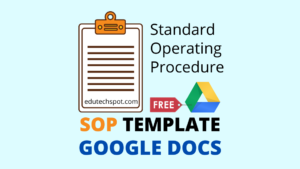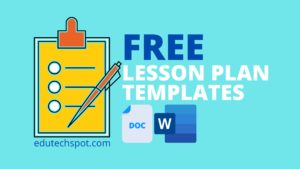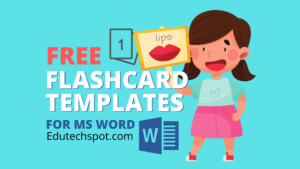The 5e Lesson Plan is a teaching method that follows a specific structure to engage students in the learning process. It stands for Engage, Explore, Explain, Elaborate, and Evaluate, and each step serves a specific purpose in the overall lesson. This method is popular in science and math classrooms, but it can be applied to any subject.
In this article, we will delve into the 5e Lesson Plan, discussing its benefits and how to effectively implement it in your classroom. We will also provide examples and templates to help you get started with this teaching method.
Benefits of the 5e Lesson Plan
The 5e Lesson Plan is a highly effective teaching method that allows students to actively participate in their own learning. It encourages students to think critically and make connections to their prior knowledge. Some of the benefits of using the 5e Lesson Plan include:
- Engages students: The first step of the 5e Lesson Plan is to engage students in the topic being taught. This can be done through a variety of activities, such as asking questions, showing videos or images, or presenting a hands-on activity. Engaging students from the start helps to capture their attention and get them excited about learning.
- Encourages exploration: The second step of the 5e Lesson Plan is for students to explore the topic on their own. This can be done through activities such as experiments, demonstrations, or discussions. Allowing students to explore and discover the topic on their own helps them to build a deeper understanding and make connections to their prior knowledge.
- Provides explanations: The third step of the 5e Lesson Plan is for the teacher to provide explanations and clarifications on the topic. This helps students to understand the concepts more fully and connect them to the exploration they did in the previous step.
- Allows for elaboration: The fourth step of the 5e Lesson Plan is for students to elaborate on the concepts they have learned. This can be done through activities such as group discussions, writing assignments, or creating presentations. Elaboration helps students to solidify their understanding and apply the concepts to new situations.
- Evaluates learning: The final step of the 5e Lesson Plan is for the teacher to evaluate student learning. This can be done through assessments, quizzes, or discussions. Evaluation helps to ensure that students have fully understood the concepts and can apply them to new situations.
Implementing the 5e Lesson Plan
Now that we have discussed the benefits of the 5e Lesson Plan, let’s look at how to effectively implement it in your classroom.
- Start with an engaging activity: The first step of the 5e Lesson Plan is to engage students in the topic being taught. This can be done through a variety of activities, such as asking questions, showing videos or images, or presenting a hands-on activity. Engaging students from the start helps to capture their attention and get them excited about learning.
- Encourage exploration: The second step of the 5e Lesson Plan is for students to explore the topic on their own. This can be done through activities such as experiments, demonstrations, or discussions. Allowing students to explore and discover the topic on their own helps them to build a deeper understanding and make connections to their prior knowledge.
- Provide explanations: The third step of the 5e Lesson Plan is for the teacher to provide explanations and clarifications on the topic. This helps students to understand the concepts more fully and connect them to the exploration they did in the previous step.
- Allow for elaboration: The fourth step of the 5E Lesson Plan is for students to elaborate on the concepts they have learned. This can be done through activities such as group discussions, writing assignments, or creating presentations. Elaboration helps students to solidify their understanding and apply the concepts to new situations.
- Evaluate learning: The final step of the 5e Lesson Plan is for the teacher to evaluate student learning. This can be done through assessments, quizzes, or discussions. Evaluation helps to ensure that students have fully understood the concepts and can apply them to new situations.
It is important to note that the 5e Lesson Plan is not a rigid structure and can be modified to fit the needs of your students and subject matter. The key is to ensure that each step serves a purpose in the overall lesson and helps students to engage, explore, explain, elaborate, and evaluate the topic being taught.
Examples of the 5e Lesson Plan:
Now that we have discussed the benefits and implementation of the 5e Lesson Plan, let’s look at some specific examples of how this teaching method can be applied in different subjects.
Example 1: Science
Engage: Show a video or image of a volcano erupting and ask students what they know about volcanoes and how they think they form.
Explore: Have students work in small groups to conduct experiments or research on how volcanoes form. Provide resources such as books, articles, and websites for them to use.
Explain: Have the teacher provide a brief overview on the process of volcanic eruption and how it is related to plate tectonics.
Elaborate: Have students create a presentation on what they learned about volcanoes and present it to the class.
Evaluate: Have students complete a quiz or assessment on the concepts covered in the lesson.
Example 2: Math
Engage: Show a video or image of a real-life application of geometry, such as a building being constructed. Ask students what they know about geometry and how it is used in the real world.
Explore: Have students work in small groups to solve geometry problems using manipulatives or online tools.
Explain: Have the teacher provide a brief overview on the different types of geometric shapes and their properties.
Elaborate: Have students create a presentation on a real-life application of geometry and present it to the class.
Evaluate: Have students complete a quiz or assessment on the concepts covered in the lesson.
Example 3: English
Engage: Show a video or image of a famous speech or poem and ask students what they notice about the language used.
Explore: Have students work in small groups to analyze the language and structure of the speech or poem.
Explain: Have the teacher provide a brief overview on the literary devices used in the speech or poem and how they contribute to the overall meaning.
Elaborate: Have students create a presentation on a famous speech or poem and present it to the class.
Evaluate: Have students complete a quiz or assessment on the concepts covered in the lesson.
FAQ
Some frequently asked questions and the answers about 5E Lesson Plan
The 5E Lesson Plan is a teaching method that follows a specific structure to engage students in the learning process. It stands for Engage, Explore, Explain, Elaborate, and Evaluate, and each step serves a specific purpose in the overall lesson.
The 5E Lesson Plan is commonly used in science and math classrooms, but it can be applied to any subject.
The 5E Lesson Plan is a highly effective teaching method that allows students to actively participate in their own learning. It encourages students to think critically and make connections to their prior knowledge.
To implement the 5E Lesson Plan, start with an engaging activity, encourage exploration, provide explanations, allow for elaboration, and evaluate learning. It is important to note that the 5E Lesson Plan is not a rigid structure and can be modified to fit the needs of your students and subject matter.
Yes, the 5E Lesson Plan can be used for online or remote learning. It is important to adjust the activities and resources to fit the virtual setting, but the overall structure of the 5E Lesson Plan can still be applied.
There are several ways to evaluate student learning with the 5E Lesson Plan, such as assessments, quizzes, or discussions. It is important to choose an evaluation method that aligns with the objectives of the lesson and helps to ensure that students have fully understood the concepts.
Yes, the 5E Lesson Plan can be used with different age groups. It is important to adjust the activities and resources to fit the age and abilities of the students, but the overall structure of the 5E Lesson Plan can still be applied.
Yes, the 5E Lesson Plan can be used for both individual and group work. It is important to vary the activities and resources to accommodate different learning styles and preferences, but the overall structure of the 5E Lesson Plan can still be applied.
The 5E Lesson Plan and inquiry-based learning share similar characteristics, as they both encourage students to actively participate in their own learning and make connections to their prior knowledge. However, the 5E Lesson Plan has a specific structure and follows the steps of Engage, Explore, Explain, Elaborate, and Evaluate, while inquiry-based learning can take many different forms.
To get started with the 5E Lesson Plan, start by familiarizing yourself with the structure and purpose of each step. Then, choose an engaging activity and develop the rest of the lesson around it. Don’t forget to use the templates and examples provided to help you get started and customize the 5E Lesson Plan to fit your needs.
Conclusion
The 5e Lesson Plan is a highly effective teaching method that allows students to actively participate in their own learning. It encourages students to think critically and make connections to their prior knowledge. By starting with an engaging activity, encouraging exploration, providing explanations, allowing for elaboration, and evaluating learning, teachers can effectively use the 5e Lesson Plan to enhance student understanding and engagement.
It is important to note that the 5e Lesson Plan is not a rigid structure and can be modified to fit the needs of your students and subject matter. The key is to ensure that each step serves a purpose in the overall lesson and helps students to engage, explore, explain, elaborate, and evaluate the topic being taught.
Using the 5e Lesson Plan can greatly benefit both teachers and students, and we encourage you to try it out in your own classroom. Don’t forget to use the templates provided to help you get started and customize the 5e Lesson Plan to fit your needs.






